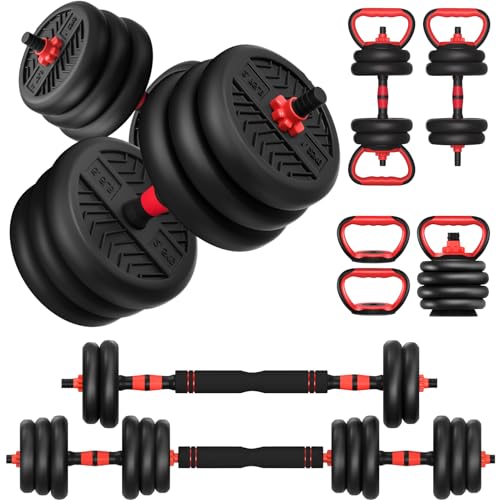resistance bands
Resistance bands have gained popularity in the fitness world for their versatility and effectiveness. They are perfect tools for training at home, although they are also ideal for the gym or outdoors. These bands are not only affordable, but they also offer an effective way to improve mobility and elasticity when performing exercises. Continue exploring in depth the benefits, types, uses and care of resistance bands. Integrate them into your exercise routine!
Benefits of bands
exercise resistance
Resistance bands are a great addition to any exercise program due to their many benefits. These bands allow you to perform a wide variety of movements that help strengthen muscles, improve flexibility and increase resistance.
Improved mobility
and elasticity
One of the main benefits of resistance bands is improved mobility and elasticity. Using bands during stretches and exercises can help increase joint range of motion and improve muscle flexibility, which is crucial for preventing injuries and improving overall performance.
Versatility and
adaptability
Resistance bands are extremely versatile and can be used to perform a wide variety of exercises, from strength training to stretching routines. Additionally, their adaptability allows people of all ages and fitness levels to use them, as the bands come in different resistance levels that can be adjusted to individual needs.
Training
of strength
In addition to improving mobility, resistance bands are ideal for strength training. Thick bands, in particular, are perfect for exercises that require more strength, as they provide greater resistance and therefore a greater challenge for the muscles.
They facilitate storage and transportation
Another important benefit of resistance bands is their ease of storage and transportation. Many of these bands come with their own bag, allowing them to be stored and taken anywhere without problems. This makes them a great option for those who travel frequently or have limited space at home.
Strengthen and tone with the best resistance bands
Take advantage of exclusive discounts!

Types of elastic bands
resistance and its uses
There are several types of resistance bands, each designed for different types of exercises and training levels. It is important to know the characteristics of each type to choose the most appropriate one according to your needs.
Thin fitness bands
Thin bands are ideal for exercises that don’t require as much flexibility or strong stretching. They are perfect for warm-ups, gentle stretches and rehabilitation exercises. They can also be used for mobility training and muscle activation before performing more intense exercises.
Thick Training Bands
Thick bands, on the other hand, are perfect for strength training and more demanding exercises. These bands provide greater resistance, allowing you to work your muscles more intensely. They are suitable for exercises such as squats, deadlifts and other movements that require considerable effort.
Resistance Bands with Handles: The Best Option for your Training
Resistance bands with handles provide constant resistance throughout the movement, helping to improve strength and flexibility. They are ideal for toning, rehabilitation and functional training exercises. In addition, its design with handles makes it easier to grip, providing greater control and comfort during exercises.
Color Bands and resistance levels
Resistance bands come in different colors, each representing a specific resistance level. Below is a general guide to colors and corresponding resistance levels:
- Yellow: Light resistance, ideal for beginners and rehabilitation.
- Red: Medium resistance, suitable for intermediate users.
- Green: Medium-high resistance, perfect for moderate strength training.
- Blue: High resistance, ideal for advanced users.
- Black: Extra high resistance, used for intensive strength training.
Knowing these resistance levels will allow you to select the appropriate band for each type of exercise, ensuring an efficient and safe workout.

How to use the bands
resistance safely
To get the most out of resistance bands and avoid injury, it is crucial to use them correctly and safely.
-Avoid perforations and damage
One of the most important recommendations is to avoid perforations in the resistance bands, as this can weaken them and make them come off more easily. Always inspect your bands before using them to make sure they have no cuts, tears, or weak spots.
-Proper usage techniques
Use proper techniques to ensure you are working your muscles correctly without putting your joints at risk. Maintain correct posture and control movement at all times, avoiding sudden jerks.
-Gradual progression
If you are a beginner, start with lower resistance bands and gradually increase to more resistant bands as your strength and skills improve. This will not only help prevent injuries, but will also ensure consistent progress in your training.
Exercises with bands
popular resistance
Resistance bands can be used for a wide range of exercises. Below are some of the most popular and effective exercises you can do with these bands.

Squats with resistance band
Place the band around your thighs, just above your knees. Perform a traditional squat, making sure to keep the band taut at all times. This exercise helps strengthen the muscles in your legs and glutes.
Push-ups with resistance band
Place the band around your arms, just above the elbows, and perform traditional push-ups. The extra resistance provided by the band helps work your chest and triceps muscles more intensely.


Push-ups with resistance band
Place the band around your arms, just above the elbows, and perform traditional push-ups. The extra resistance provided by the band helps work your chest and triceps muscles more intensely.

Back stretches WITH RESISTANCE BANDS
Hold the band with both hands and stretch it while performing rotation and back flexion movements. This exercise is excellent for improving flexibility and relieving muscle tension in your back.
Storage and care of
elastic resistance bands
Proper care of resistance bands is crucial to maintaining their durability and effectiveness over time.
Storage
Store the bands in a cool, dry place, away from direct sunlight and heat sources. Many bands come with a storage bag, making it easy to keep them organized and protected.
Cleaning
Clean your bands regularly with a damp cloth and mild soap to remove sweat and dirt. Avoid the use of aggressive chemicals that could damage the material.ama
Integrating resistance bands into your exercise routine can transform your training, providing an effective and versatile way to improve your strength, mobility and flexibility. From use at home to the gym or outdoors, these bands offer a practical and efficient solution for anyone looking to improve their fitness.
Resistance bands are not only easy to use and carry, but they also come in a variety of resistance levels to suit different needs and goals. Always remember to use the bands safely, avoiding perforations and following proper techniques to maximize their benefits and prevent injuries.
Incorporate resistance bands into your workouts and discover how they can help you achieve your fitness goals effectively and conveniently.



















